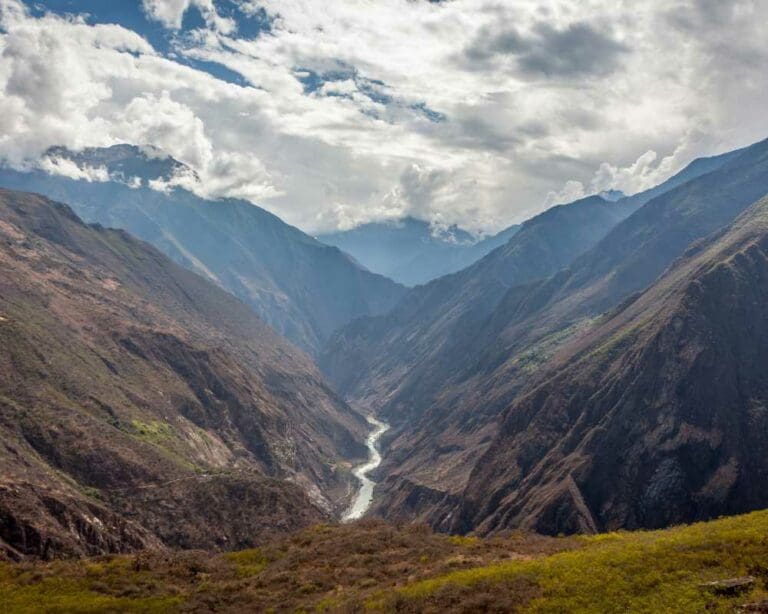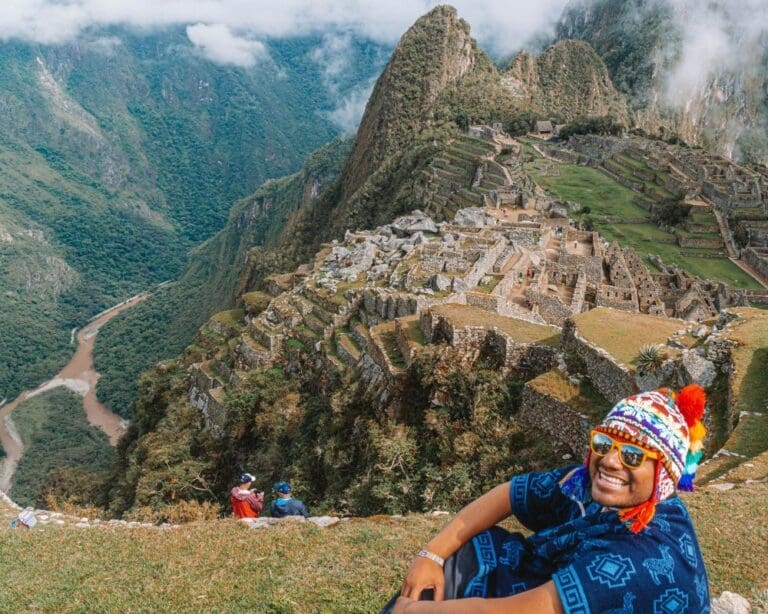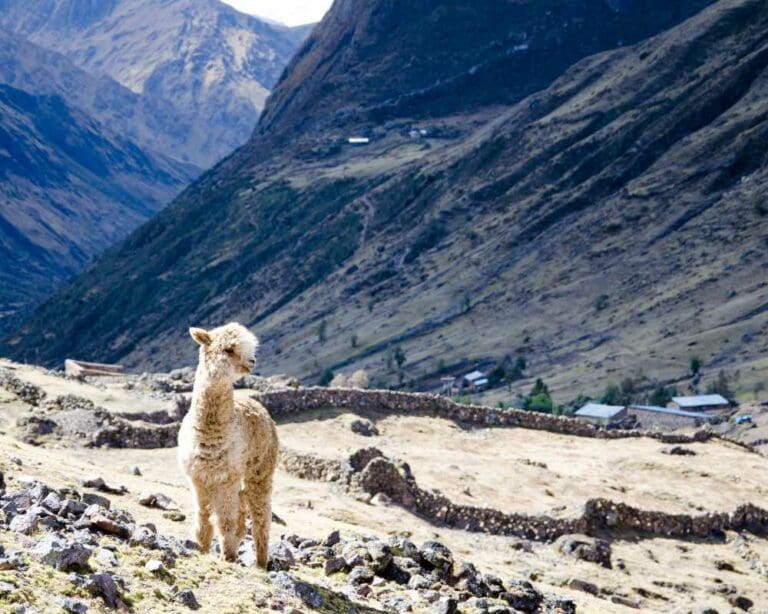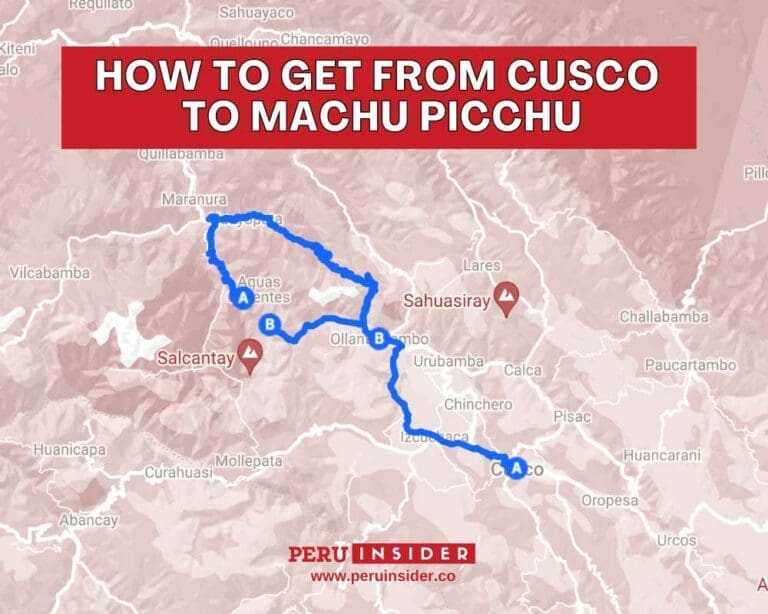Traversing sacred grounds: the definitive 4-day Inca trail to Machu Picchu trekking guide
Planning to hike the Inca trail to Machu Picchu? This travel guide will discuss everything you need to know such as the best time to visit, hiking permits, difficulty level, daily itinerary, and more!
The Inca Trail, or Qhapaq Ñan in the native Quechua language, isn’t just a popular tourist path; it’s a journey back in time.
As part of a vast network of roads that stretched from modern-day Colombia to Argentina, this trail was crucial for the Inca Empire’s communication, trade, and military movements.
Though Machu Picchu is its most famous endpoint, the Inca Trail was used to reach numerous sacred sites and settlements throughout the region.
More than just a physical journey, the Inca Trail represents a spiritual pilgrimage, echoing the route that the Incas believed the sun god took during its daily voyage across the sky.

The positioning of the ruins and sacred sites along the trail was not accidental.
Each holds a unique spiritual or astronomical significance, making the trek not just a hike, but a journey through the Inca’s profound connection with nature and the cosmos.
As you tread this ancient pathway, they are walking in the footsteps of priests, emperors, and pilgrims from centuries ago.
Here’s a complete and detailed travel guide if you plan to trek the Inca trail. If you have any questions, feel free to leave a comment below and we’ll get back to you as soon as possible!
You might also like:
- Salkantay Trek vs Inca Trail: a comparison guide to two of Peru’s premier hikes
- Lares Trek to Machu Picchu travel guide
- The ultimate guide to the Choquequirao Trek to Machu Picchu

📷 Photography in this post is provided by Daniel Gasienica unless otherwise stated.
⏰ How long does it take to walk the Inca Trail?
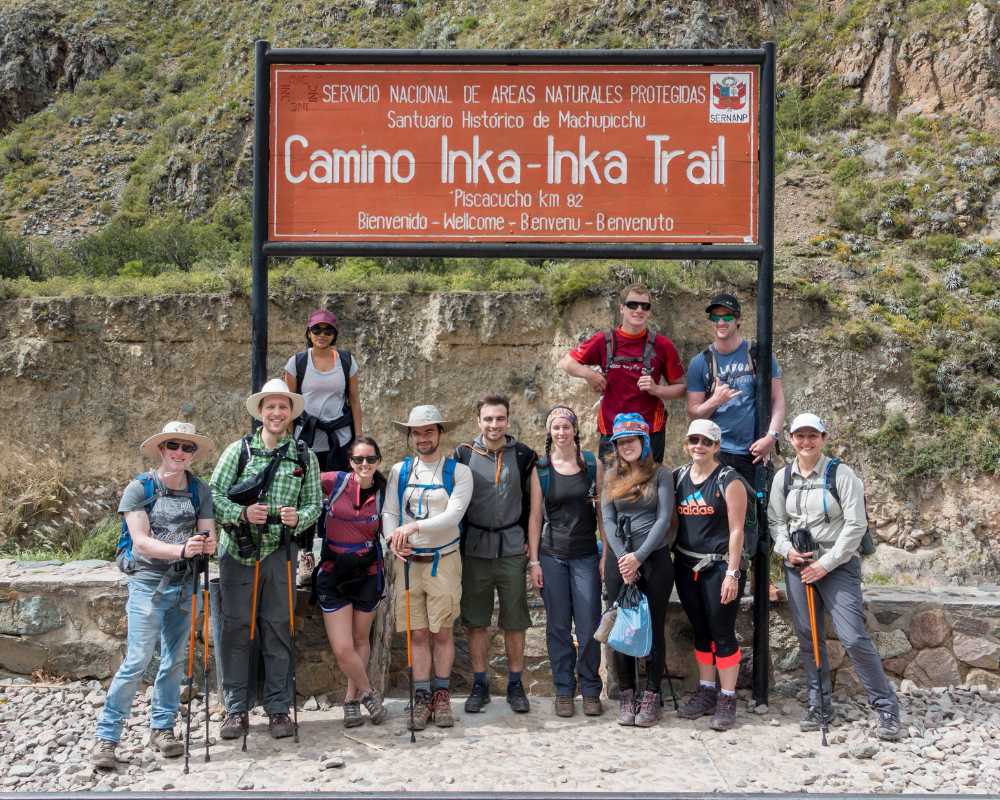
The classic Inca Trail trek spans approximately 43 km (26 miles) and takes four days to complete, culminating in the awe-inspiring ruins of Machu Picchu.
Along the way, you will encounter steep ascents, ancient stone steps, and breathtaking vistas, all leading to the iconic Sun Gate (Intipunku) that overlooks Machu Picchu.
The trail not only offers physical challenges but also ample opportunities for introspection and connection with the rich history and culture of the Inca civilization.
📅 What are the best months to hike the Inca Trail?
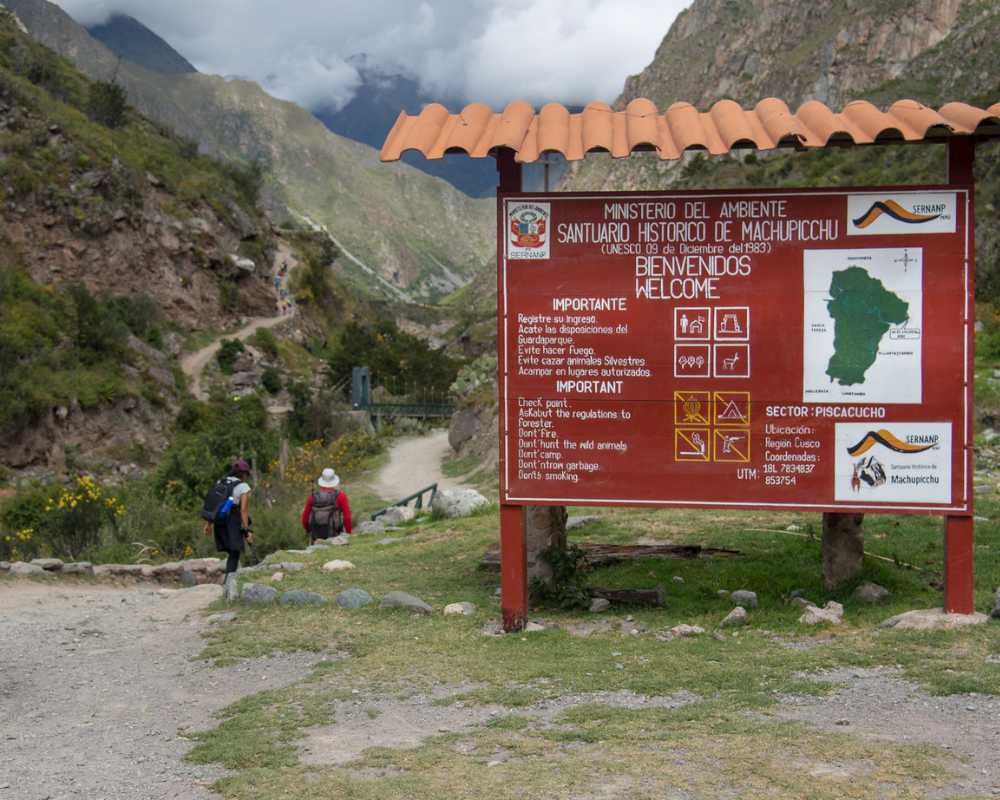
The Inca Trail is a breathtaking experience year-round; however, some months offer better conditions than others.
The dry season, from May to September, is the most popular due to the clear skies and reduced chance of rainfall.
However, these months also see the highest influx of tourists, so prepare for a more crowded trail.
The wet season, from November to March, offers more solitude but can be challenging due to frequent rain and slippery paths.
Do note that the Inca trail is closed for maintenance every February.
👉🏽 See also: A month-by-month guide on the best time to visit Machu Picchu
🏋🏻♂️ Preparing for the Inca Trail trek
This journey is not just about reaching Machu Picchu, but also about enjoying the majestic landscapes, rich history, and personal growth along the way.
Here are some necessary preparations you need to do to hike the Inca trek.
Is the Inca trail hard?

Yes, the Inca Trail is considered a moderately challenging trek.
Factors that contribute to its difficulty include the high altitudes, which can lead to altitude sickness for some, the steep ascents and descents, and the variability of the weather.
The trail involves walking over uneven and sometimes rocky terrain, and there are sections with many steps. Proper preparation and acclimatization are essential for a successful trek.
How fit do you have to be to walk the Inca Trail?
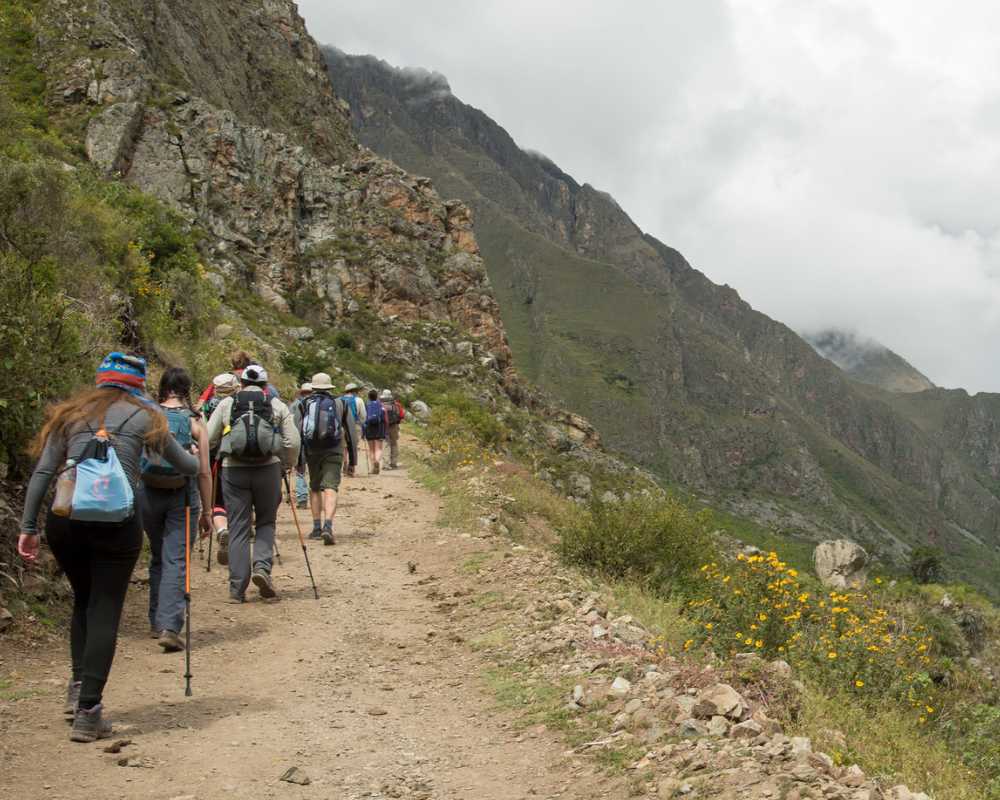
The Inca Trail, with its steep ascents, descents, and high altitudes, is not to be underestimated. To enjoy the trek fully and reduce the risk of injury, start training at least 3 months in advance.
This training should include:
- Cardiovascular exercises: Running, cycling, and swimming help improve endurance.
- Strength training: Focus on legs, back, and core to cope with the hilly terrain and carrying a backpack.
- Hiking: Take several long hikes, preferably on hilly terrains, to acclimate your body to similar conditions.
Altitude sickness in Inca Trail hike
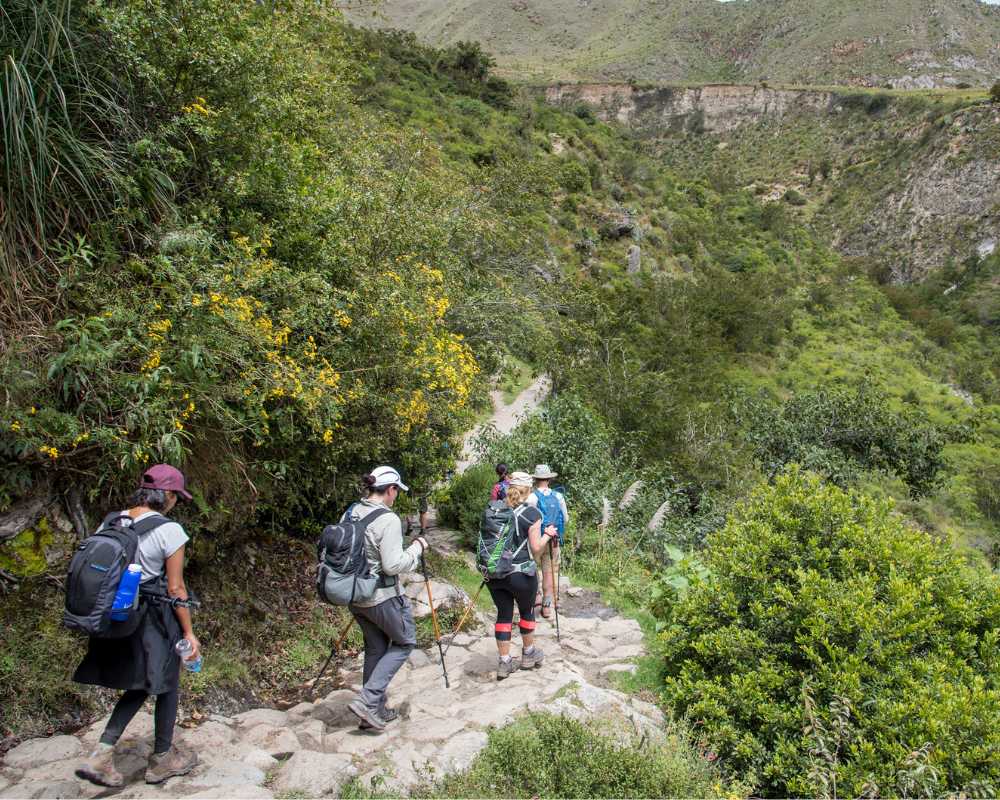
Altitude sickness can affect anyone, regardless of fitness level. Symptoms include headache, dizziness, and nausea. To mitigate the risks:
- Acclimatize: Spend 2-3 days in Cusco or another high-altitude area before starting the trek.
- Stay hydrated: Drink at least 3 liters of water daily.
- Avoid alcohol and caffeine: Both can exacerbate altitude sickness symptoms.
- Consult a doctor: Consider medication like Acetazolamide to help with acclimatization.
Can a beginner hike the Inca Trail?

While the Inca Trail is challenging, beginners can successfully complete it with proper preparation. It’s crucial for first-timers to:
- Undergo Pre-Trek Training: This involves cardio exercises like walking, jogging, or stair climbing for several weeks or even months before the hike to build stamina.
- Acclimatize: Spend at least 2 days in Cusco or another high-altitude location before starting the trek to get used to the thinner air.
- Hire a Reputable Tour Operator: They can provide guidance, logistical support, and insights about the trail, making the journey more manageable for beginners.
- Listen to Their Body: It’s essential to rest when needed and communicate any issues, such as altitude sickness symptoms, to guides.
Can a 70-year-old hike the Inca Trail?
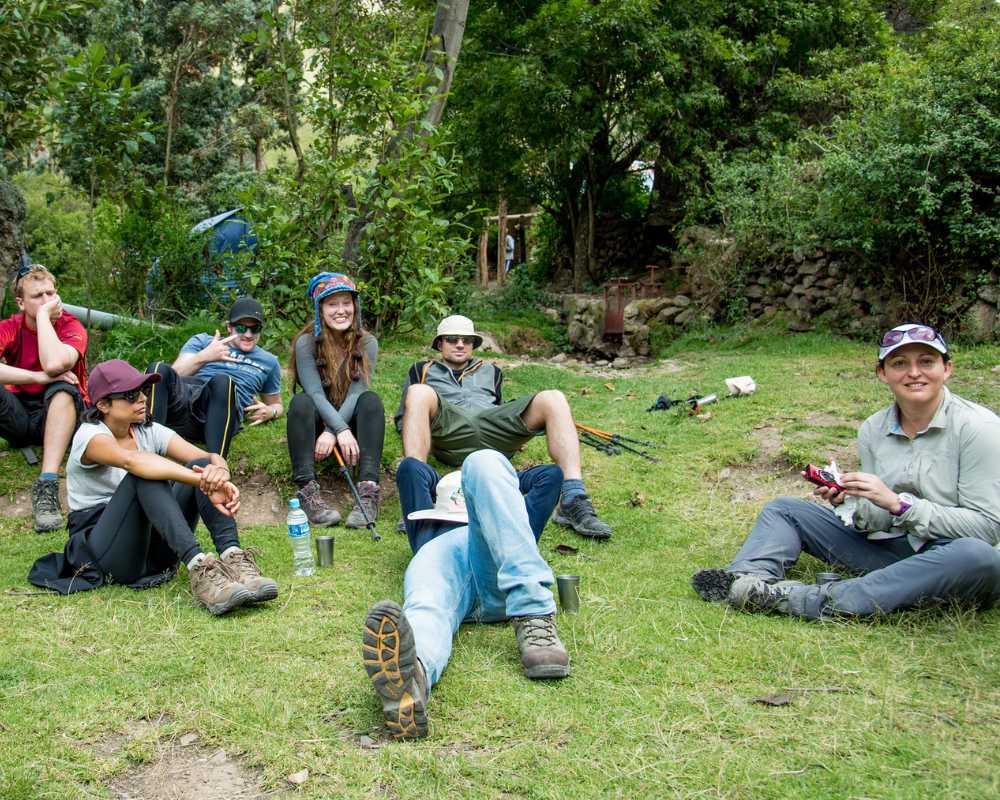
Age is not necessarily a barrier to hiking the Inca Trail, and there have been individuals in their 70s and even older who have successfully completed the trek. However, several factors come into play:
- Physical Fitness: It’s vital that an older individual be in good health and physical condition. Regular health check-ups and consultations with a doctor before the trek are essential.
- Prior Experience: While beginners can hike the trail, having prior trekking experience can be beneficial for older individuals as they’ll know what to expect and how to pace themselves.
- Support: Hiring a reputable tour operator who understands the unique needs of older trekkers can make a big difference. This includes having knowledgeable guides and a support team that can handle emergencies.
- Pacing and Rest: Older trekkers should consider taking the trek at a slower pace, with more breaks to ensure they don’t overexert themselves.
Ultimately, while age can bring certain challenges, with the right preparation and mindset, older adventurers can have a fulfilling and memorable experience on the Inca Trail.
Note that many fit 70-year-olds to the Inca trail. It’s really up to you as you know yourself better!
🥾 What to pack for the Inca trail
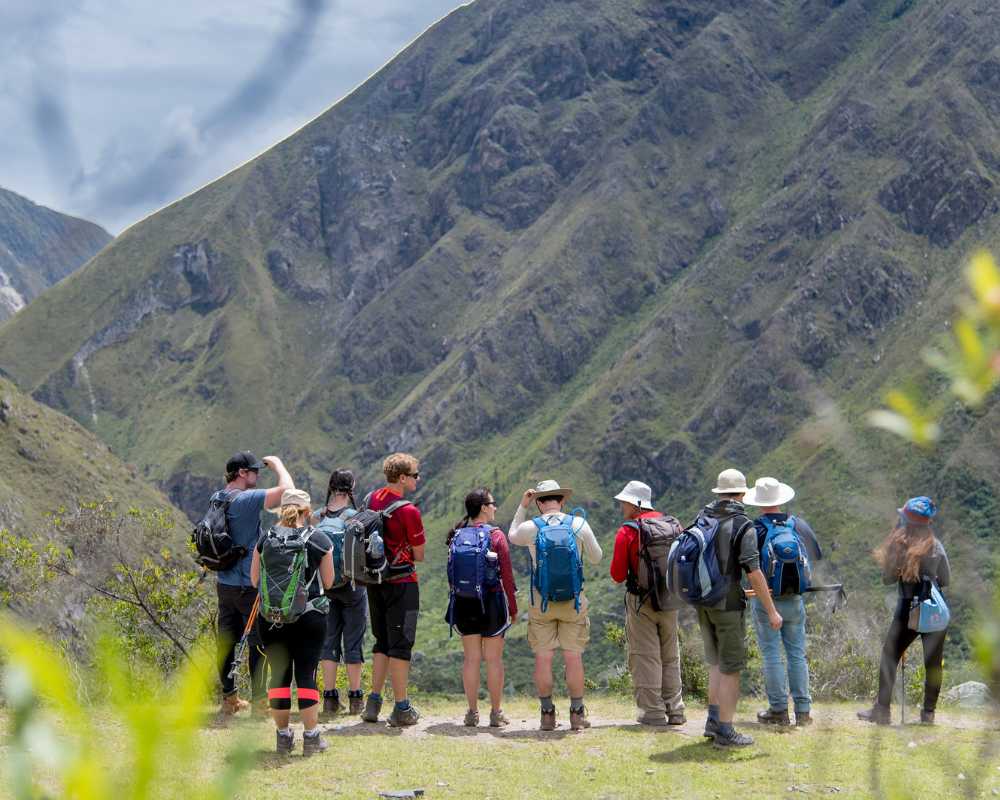
What you bring on the Inca Trail is crucial to your experience. Pack light, but ensure you have all essentials:
- Clothing: Layers are key. Include moisture-wicking base layers, a fleece or down jacket, rain gear, and comfortable hiking boots.
- Camping gear: A good quality sleeping bag, an insulating sleeping pad, and a headlamp with extra batteries.
- Health and Safety: First aid kit, water purification tablets, sunblock, insect repellent, and any personal medications.
- Nutrition: Energy-rich snacks, such as nuts, dried fruits, and protein bars.
- Documentation: Passport (a must for entry to Machu Picchu), trail permits, and necessary identification.
📝 Obtaining Permits for the Inca Trail
Obtaining permits and understanding the regulations is a crucial first step in your Inca Trail journey.
By being informed and responsible, trekkers can ensure that this ancient path remains preserved for future generations.
Why you need a permit to hike the Inca Trail
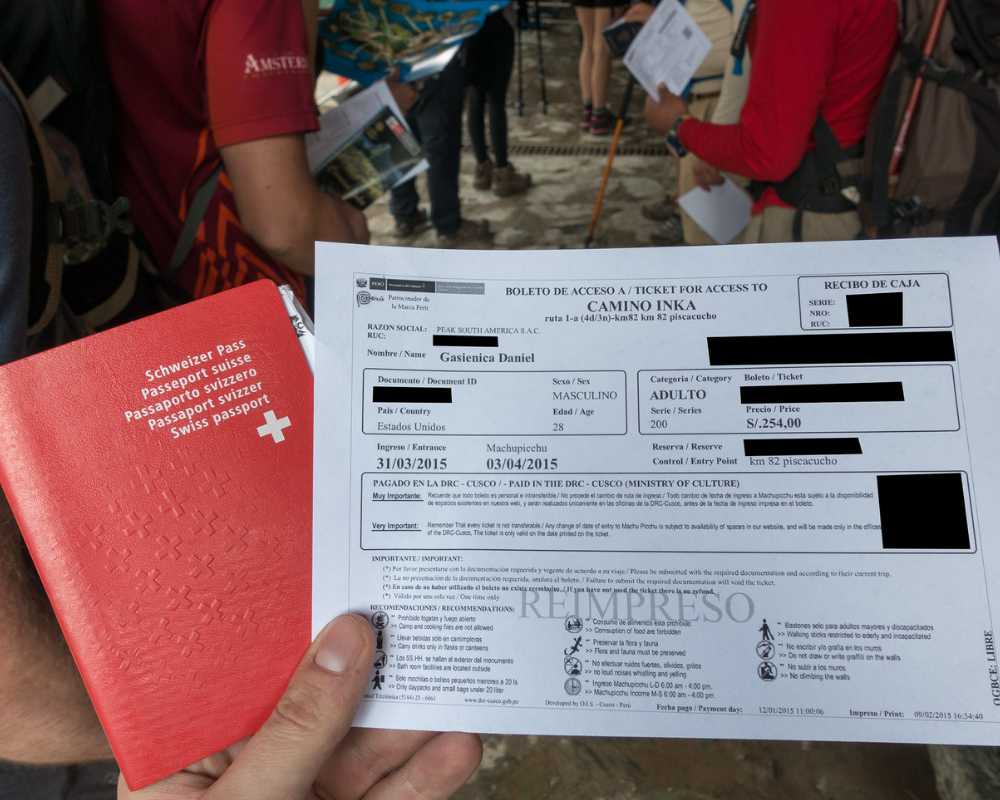
Machu Picchu and the Inca Trail are UNESCO World Heritage sites and are among the most treasured archaeological wonders in the world.
To preserve its sanctity and to regulate the number of visitors, permits are mandatory for anyone looking to trek the classic Inca Trail.
How and where to get Inca Trail permits
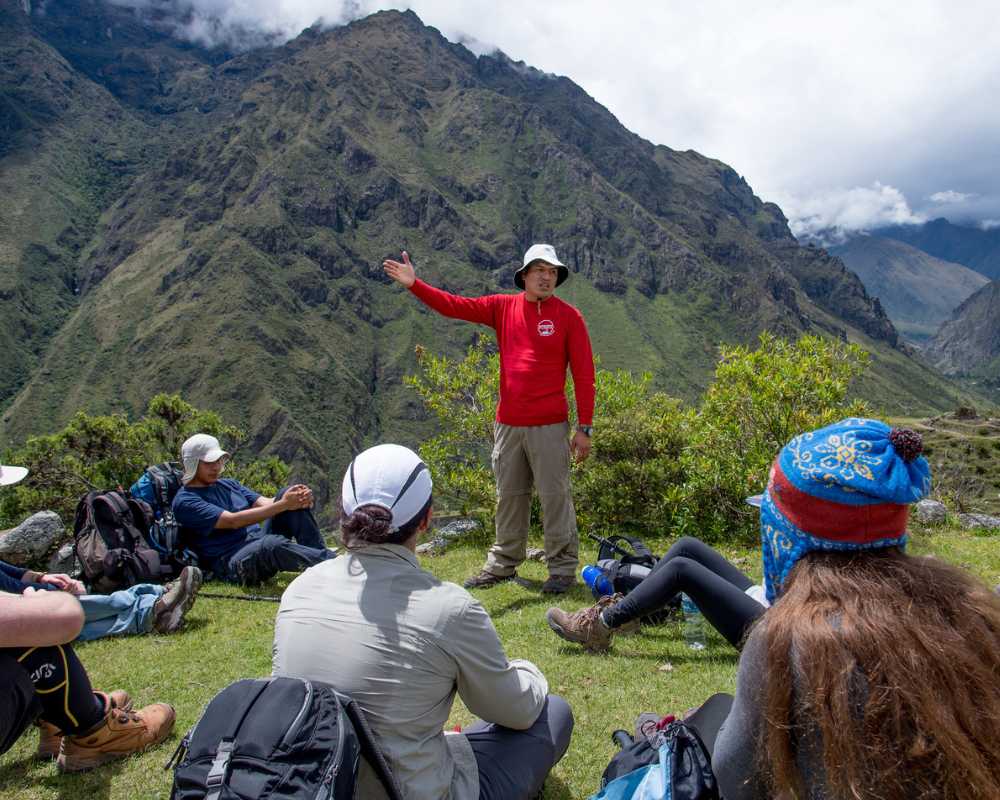
Inca trail hiking permits are issued by the Dirección Regional de Cultura Cusco (DRC).
Only a limited number of permits (usually around 500 per day, including trekkers, guides, and porters) are available, so it’s crucial to book well in advance, often months ahead, especially during peak trekking season.
Most trekkers obtain their permits through a tour agency. The agency handles all the logistics, ensuring that the permits, guides, and other essentials are in place.
It’s challenging to book the Inca Trail independently as the DRC doesn’t usually sell permits to individual travelers, especially if you don’t speak Spanish.
Do you need a guide to hike the Inca trail to Machu Picchu?

While the classic Inca Trail requires you to have a guide, there are benefits to choosing a guided tour even on other trails:
- Local expertise: Guides provide valuable insights into the history, culture, and significance of various sites along the trail.
- Safety: A knowledgeable guide can navigate challenging terrains and help in case of emergencies.
- Convenience: Most guided tours include porters who assist with carrying camping gear and food.
Environmental Responsibility and Trail Etiquette
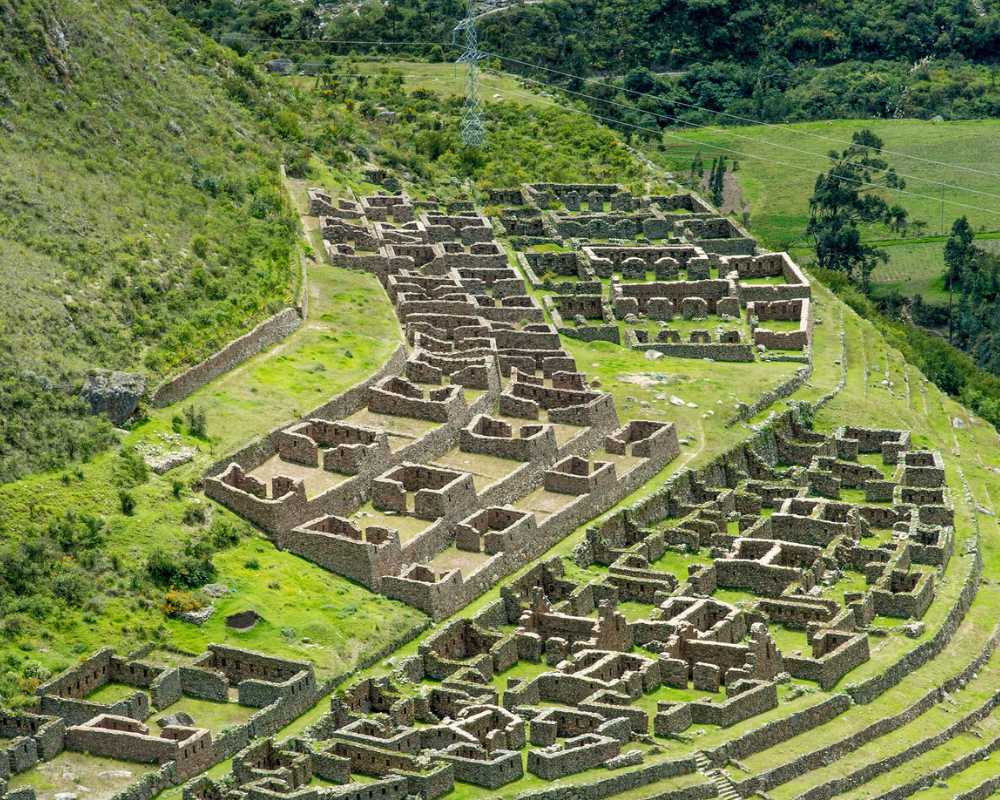
Given its significance and popularity, it’s paramount to trek responsibly:
- Leave No Trace: Carry out all trash, avoid picking plants or disturbing wildlife, and use established campsites and toilet facilities.
- Stay on the Trail: Wandering off can cause erosion and damage delicate ecosystems.
- Respect Local Communities: The Inca Trail and its surroundings are home to many indigenous communities. Always ask permission before taking photos and respect local customs and traditions.
- Sustainable Tourism: Opt for tour operators that practice ethical treatment of porters and promote sustainable tourism. This ensures not just the preservation of the trail, but also the well-being of the local community.
🕧 How many hours a day do you walk on the Inca Trail?
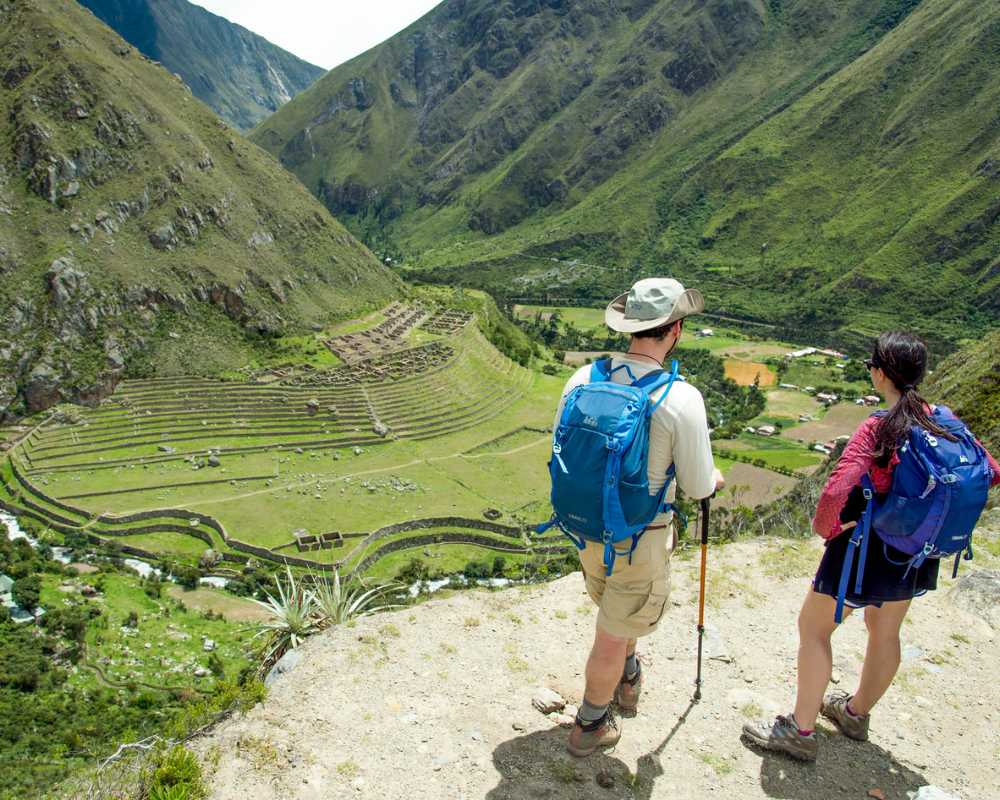
You will walk at least 6 hours a day on the Inca trail before reaching each campsite to rest and spend the night. This all depends on the speed of your group. Sometimes, it can be 8 hours.
This detailed itinerary will give you an idea about the four-day trek, highlighting the physical challenges, historical landmarks, and natural beauty experienced along the way.
Inca Trail Itinerary Day 1

The journey begins at Km 82, marking the official start of the Inca Trail. On this day, trekkers cover approximately 12 km over 5 to 7 hours.
The terrain is moderate with undulating paths, serving as a warm-up for the more challenging days ahead.
Along the way, you are treated to the Llactapata ruins and stunning vistas of the Urubamba mountain range, crowned by the impressive Veronica peak.
The day concludes at the Wayllabamba campsite, where you will rest for the night.
Inca Trail Itinerary Day 2
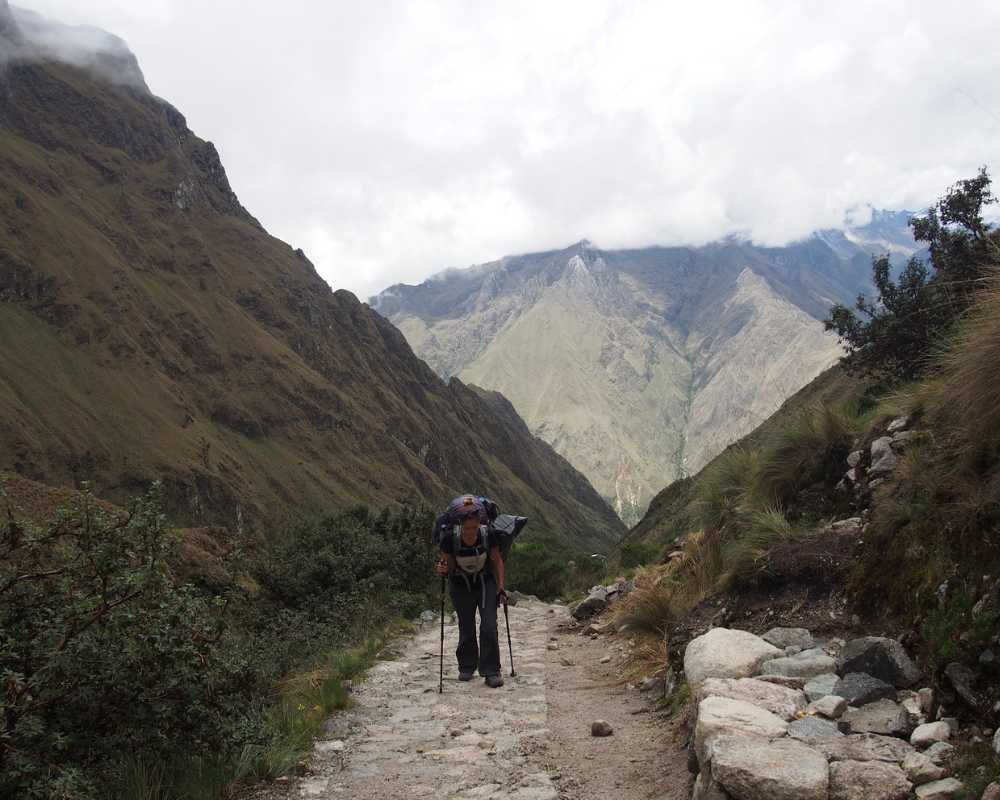
Starting from Wayllabamba, this day is often considered the most challenging segment of the trek.
Over approximately 11 km, you will face a significant altitude gain of 1,200 m as they ascend towards Dead Woman’s Pass, known as Warmiwañusca in Quechua.
This pass is the highest point on the trail, and reaching it is a monumental achievement.
Despite the physical challenge, the rewards are plentiful, with breathtaking panoramic views of the surrounding Andean landscape.
The day winds down as you descend to the Pacaymayu campsite to recuperate.
Inca Trail Itinerary Day 3

From Pacaymayu, you will embark on a diverse journey that covers roughly 16 km over 8 to 10 hours.
This day is characterized by multiple ascents and descents, leading through lush cloud forests and subtropical jungles.
The path reveals several archaeological gems, including the ruins of Runkurakay, Sayacmarca, and Phuyupatamarca.
The day’s trek offers immersive views of the Aobamba Valley and culminates at the stunning terraces of Wiñay Wayna, where you will set up camp for the night.
Inca Trail Itinerary Day 4

The final leg of the trek is a shorter but highly anticipated stretch. Covering about 5 km in 2 to 3 hours, trekkers start from Wiñay Wayna and head towards the world-famous Machu Picchu.
The terrain involves a mostly gradual descent, and the climactic moment arrives when you get your first glimpse of the majestic Machu Picchu from the Sun Gate, or Intipunku.
Emotions run high as the iconic citadel reveals itself, and the remainder of the day is spent exploring this renowned archaeological marvel.
💲 How much does it cost to hike the Inca Trail for 4 days?

The cost of hiking the Inca Trail largely depends on several factors, including the time of year, how far in advance you book, the type of service you choose, and additional amenities or services.
The total estimated cost to hike the Inca trail for 4 days starts from $700 USD (on a very tight budget) to $4,000+ USD (for a luxury experience).
Inca trail has 2 packages to choose from: standard and luxury.
If you are booking an Inca trail trekking package with a tour operator, expect to pay $600-$1,000 USD for a standard package.
This generally includes guide services, porters to carry camping gear, meals during the trek, tents, and entrance fees to Machu Picchu.
The luxury package starts from $1,000-$3,000 USD. This could include higher quality meals, more comfortable camping gear, smaller group sizes, and other premium services.
The permits are usually included in most tour packages. If bought separately, expect to pay approximately $200-$250.
For equipments, you can expect to pay:
- Tent: Usually included in tour packages. Rental if needed: $20 – $50
- Sleeping Bag: Not always included in tour packages. Rental: $10 – $30
- Trekking Poles: Rental: $10 – $20
- Other Gear (backpacks, headlamps, etc.): Variable, depending on need and quality.
If you want to add additional activities that are not included in your Inca trail package, the Huayna Picchu or Machu Picchu Mountain ticket costs $10-$15 extra (often combined with Machu Picchu entrance).
For transportation like the train to Aguascalientes, prices range from $50-$500, depending on service (Expedition, Vistadome, or Belmond Hiram Bingham).
The bus ride from Aguas Calientes to Machu Picchu is approximately $24 (round trip).
If you decide to stay in Aguascalientes before or after the trek, hotel prices start at $20-$600 per night, depending on hotel standards.
Lastly, if you need a porter to help you carry your things, a decent tip is around $100 for 4 days or more, based on your satisfaction and group size. The same goes for the tour guides.
You also need to pay for travel insurance for the trek but yours purchased from home will be sufficient. This starts at $40 per month.
⛺ Inca Trail campsites and accommodations
Trekking the Inca Trail is a multi-day journey that demands proper rest at the end of each challenging day.
Knowing where to camp and what facilities are available can make a difference in the overall trekking experience.
Here’s what you need to know about the campsites, amenities, toilets, and facilities within the Inca trail:
Official Inca Trail campsites
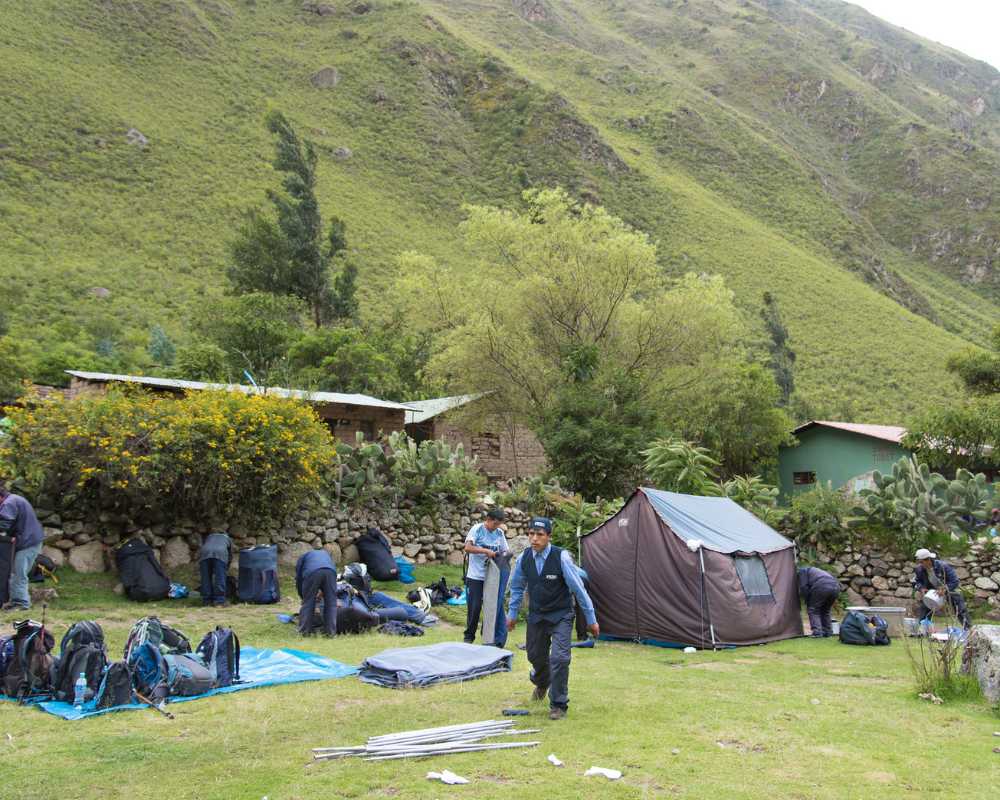
Throughout the Inca Trail, there are designated campsites. These campsites are spaced at intervals, ensuring that each day’s trek ends at a comfortable resting spot.
Some of the main campsites include:
- Wayllabamba: This campsite is usually the stop for the first night, providing basic facilities.
- Pacaymayu: Located after the rigorous climb to Dead Woman’s Pass, Pacaymayu offers a much-needed rest spot before the subsequent day’s trek.
- Wiñay Wayna: Serving as the final campsite before Machu Picchu, this location has a bit more in terms of facilities due to its proximity to the citadel.
There are also alternative campsites available, especially for those trekking the lesser-known routes. If doing the Inca trail hike on your own, always ensure you are camping in designated areas to preserve the trail’s environment.
Inca Trail facilities
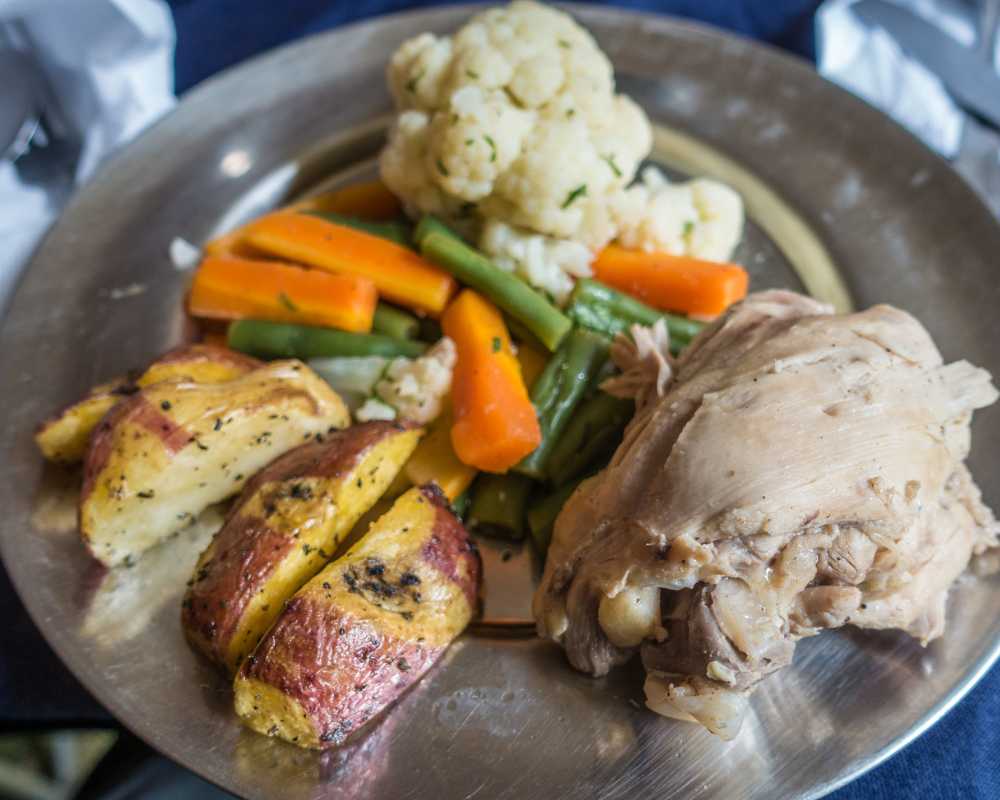
Most official campsites offer basic amenities to cater to your needs:
There are toilet facilities on the Inca trail. While not always up to western standards, they serve the purpose. It’s a good idea to bring your own toilet paper and hand sanitizer.
Many campsites are near natural water sources. However, it’s essential to treat the water with purification tablets or boil it before consumption. Bring a water bottle!
While some campsites might have basic huts or covered areas, it’s generally up to you or your tour operators to provide tents.
Designated spots for cooking are also available. Trekkers with guided tours will have meals prepared for them by their crew. These are usually delicious and nourishing!
Dos and Don’ts on the Inca Trail to Machu Picchu
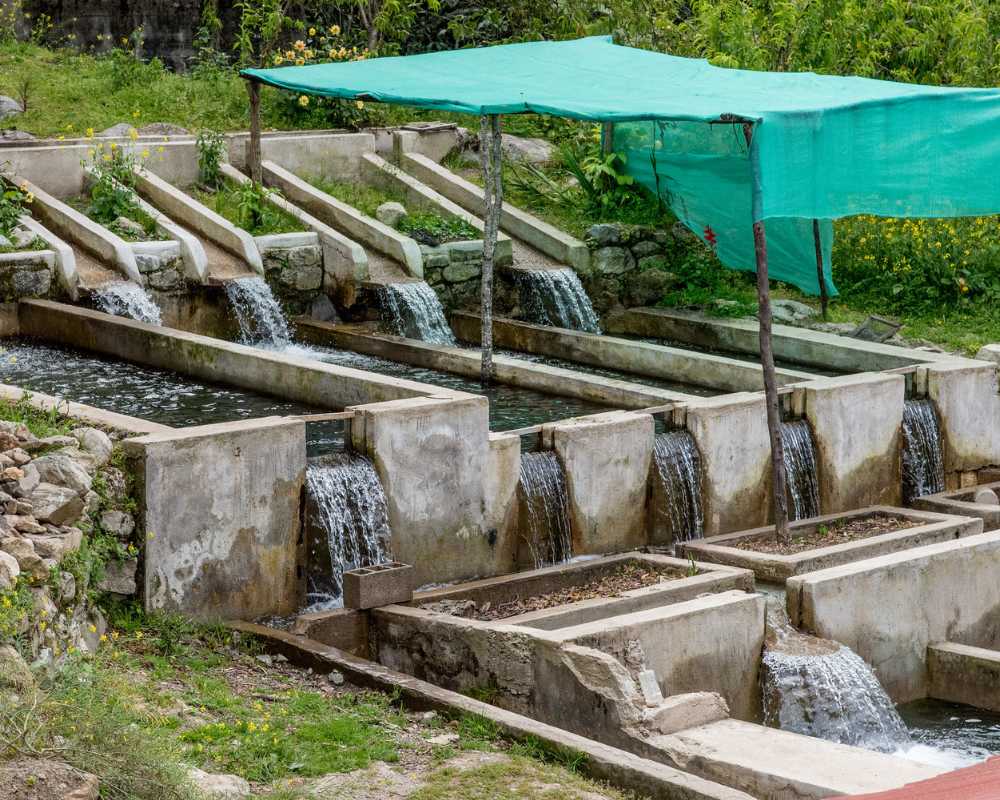
Preserving the sanctity and natural environment of the Inca Trail is the responsibility of every trekker. Here are some basic etiquette guidelines:
- Do Leave No Trace: Always pack out what you pack in. Leave the campsite as you found it, if not cleaner.
- Don’t Camp Outside Designated Areas: These areas are selected to minimize the impact on the environment.
- Do Respect Quiet Hours: After a long day of trekking, everyone appreciates a peaceful night’s sleep. Keep noise levels down, especially after sunset.
- Don’t Damage Flora and Fauna: Let wildlife be and avoid picking plants or flowers. The trail’s beauty lies in its preservation.
- Do Use Biodegradable Products: If you need to use soaps or detergents, ensure they are eco-friendly to protect the water sources.
Remember, the Inca Trail is a privilege to trek, and it’s up to each visitor to ensure it remains a beautiful and sustainable path for future generations.
⛰️ Key attractions along the Inca Trail
The Inca Trail isn’t just a journey to reach Machu Picchu; it’s a voyage through time, history, and diverse ecosystems.
While the ultimate destination is undoubtedly the highlight, the path itself offers its own set of remarkable attractions that leave trekkers in awe.
From ancient ruins to breathtaking landscapes and endemic species, the trail is an ever-unfolding tapestry of wonders.
Archaeological sites on the Inca Trail
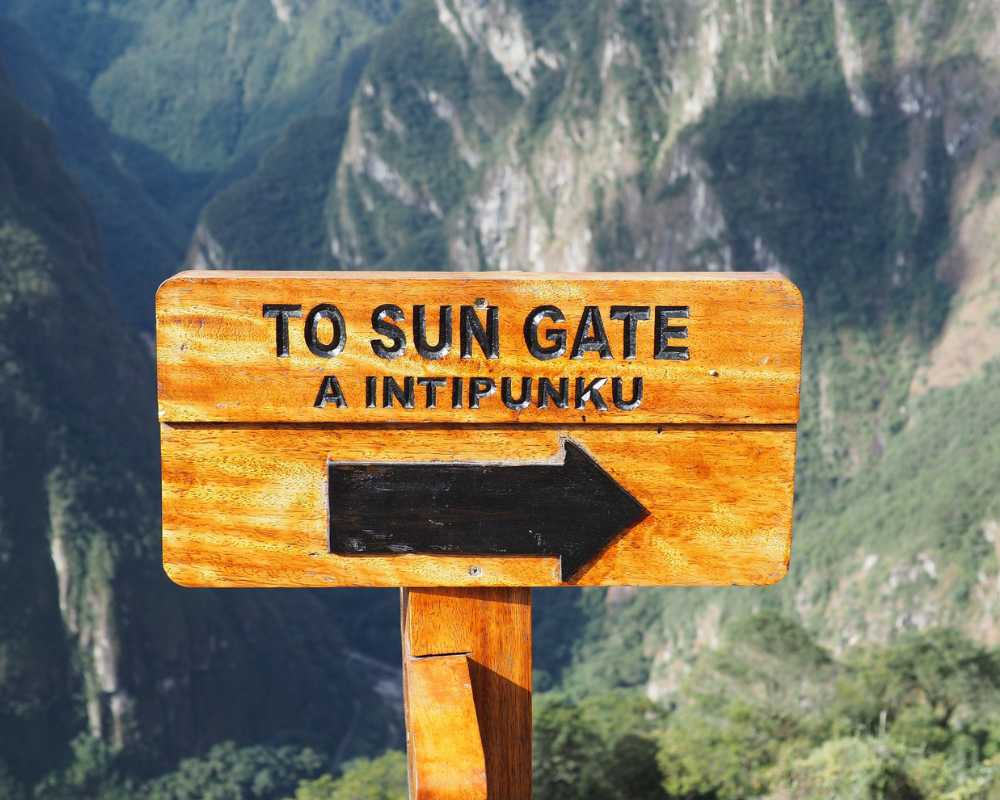
Stepping onto the Inca Trail is akin to traveling back to the times of the great Inca civilization.
Throughout the trek, a series of archaeological sites provide insights into their history, culture, and architectural prowess.
First is the Llactapata. Situated on a ridge overlooking the Urubamba River, this was an important ceremonial and agricultural site. The terraced ruins give trekkers their first taste of Inca architecture.
You will also see Runkurakay. These semi-circular ruins were likely a tambo, a type of rest and relay station used by chaskis (Inca messengers). The site is strategically positioned overlooking the Pacamayo Valley.
Sayacmarca, accessed via a narrow stone staircase, this site boasts intricate stone constructions, ritual baths, and panoramic views, emphasizing the Inca’s understanding of their environment and landscape.
Lastly, the majestic Phuyupatamarca. Often called the “Cloud-level Town,” this site offers a stunning complex of ceremonial baths and platforms, surrounded by ethereal mists, capturing the essence of the high Andes.
Panoramic views on the Inca trail
The Inca trail meanders through diverse landscapes, each offering its own breathtaking vista.
The highest point of the trail is the Dead Woman’s Pass (Warmiwañusca). this pass offers a panoramic view of the surrounding valleys and peaks, making the challenging ascent worthwhile.
The Aobamba Valley is a lush and verdant valley that unfolds a rich tapestry of cloud forests, waterfalls, and distant snow-capped peaks, providing a refreshing contrast to the earlier high-altitude terrains.
The first view of Machu Picchu from the Sun Gate (Intipunku) is nothing short of magical. As the sun rises, it casts a golden hue over the citadel, creating a picture-perfect moment.
Unique Flora and Fauna

The Inca Trail traverses multiple ecosystems, from high-altitude puna to subtropical cloud forests. This diversity results in a rich array of flora and fauna:
Orchids, bromeliads, and ferns dot the cloud forests, while ichu grass covers the higher altitudes.
Keep an eye out for the unique puya raimondii, the world’s largest bromeliad, which can be found in certain sections of the trail.
From the majestic Andean condor soaring overhead to the elusive spectacled bear hidden in the forests, the trail is home to numerous species.
Colorful hummingbirds, striking butterflies, and even the Andean fox can be spotted if one remains vigilant.
✅ How safe is the Inca Trail?
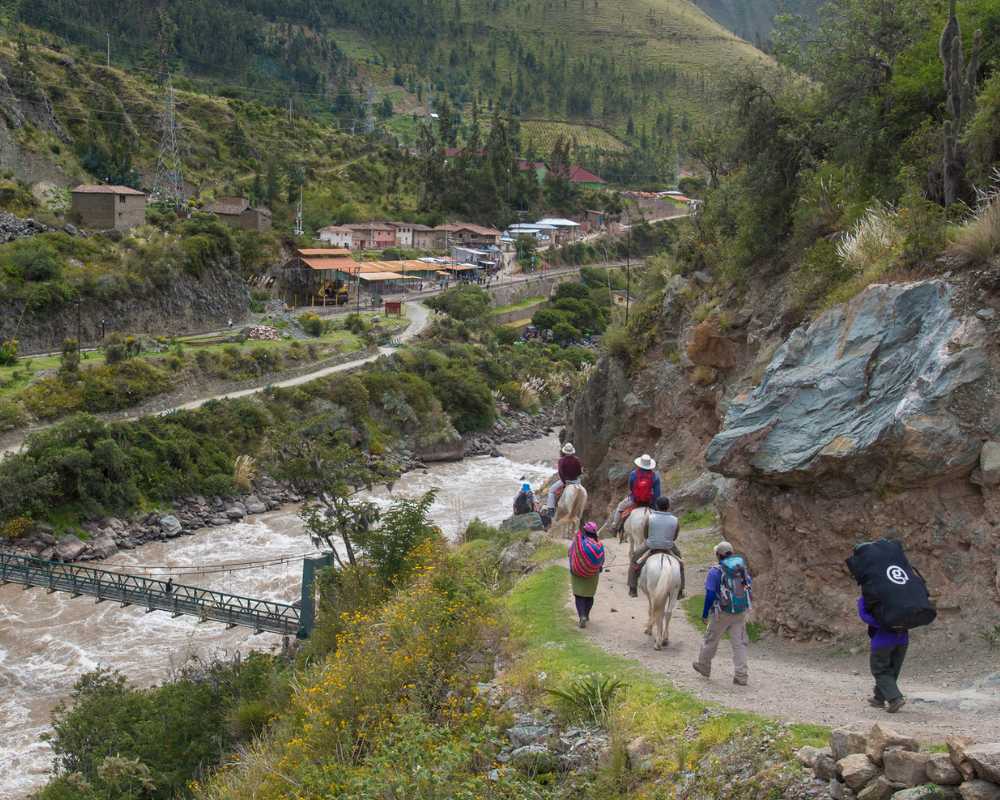
Trekking the Inca Trail is an exhilarating experience, but like all adventures, it comes with its set of challenges.
The high-altitude terrain, fluctuating weather conditions, and physical demands of the trek require travelers to be proactive about their safety and health.
Here is everything you need to know about the safety on the Inca Trail to Machu Picchu:
Common Inca Trail Hazards
One of the most common issues trekkers face is altitude sickness or soroche. Symptoms include headaches, nausea, dizziness, and shortness of breath.
It’s essential to acclimatize, ascend slowly, and consider taking medication if recommended by a doctor.
The trail can be slippery, especially after rainfall. Proper hiking boots with good grip and using trekking poles can mitigate the risk of accidents.
From intense sun to sudden rain or even hail, be prepared for a range of weather conditions. Waterproof gear, sun hats, sunglasses, and sunscreen are crucial.
Sandflies and mosquitoes can be a nuisance. Bring insect repellent and consider wearing long sleeves and pants in areas prone to these pests.
Staying Hydrated and Fed
At high altitudes and with physical exertion, hydration is key. Drink plenty of purified water throughout the trek, and avoid excessive caffeine or alcohol, as they can exacerbate dehydration.
Consuming a balanced diet rich in carbohydrates can provide sustained energy for the trek. Many tour operators offer meals tailored to the needs of trekkers, but it’s also a good idea to carry snacks like nuts, dried fruits, and energy bars.
Ensure all water is purified before drinking. Avoid raw foods that might have been washed in untreated water.
First Aid Recommendations
Carrying a basic first aid kit can be a lifesaver on the trail. Some essentials include:
- Plasters and Bandages: For minor cuts and scrapes.
- Antiseptic Wipes: To clean wounds.
- Pain Relievers: Like paracetamol or ibuprofen for headaches or pain.
- Altitude Sickness Medication: If prescribed by a doctor.
- Anti-diarrheal Medicine: Traveler’s diarrhea can be common, so having medication can be beneficial.
- Blister Pads or Moleskin: To prevent and treat blisters, a common ailment on long treks.
- Personal Medications: Any personal prescription medications should be carried, along with a copy of the prescription.
🚆 Returning from Machu Picchu
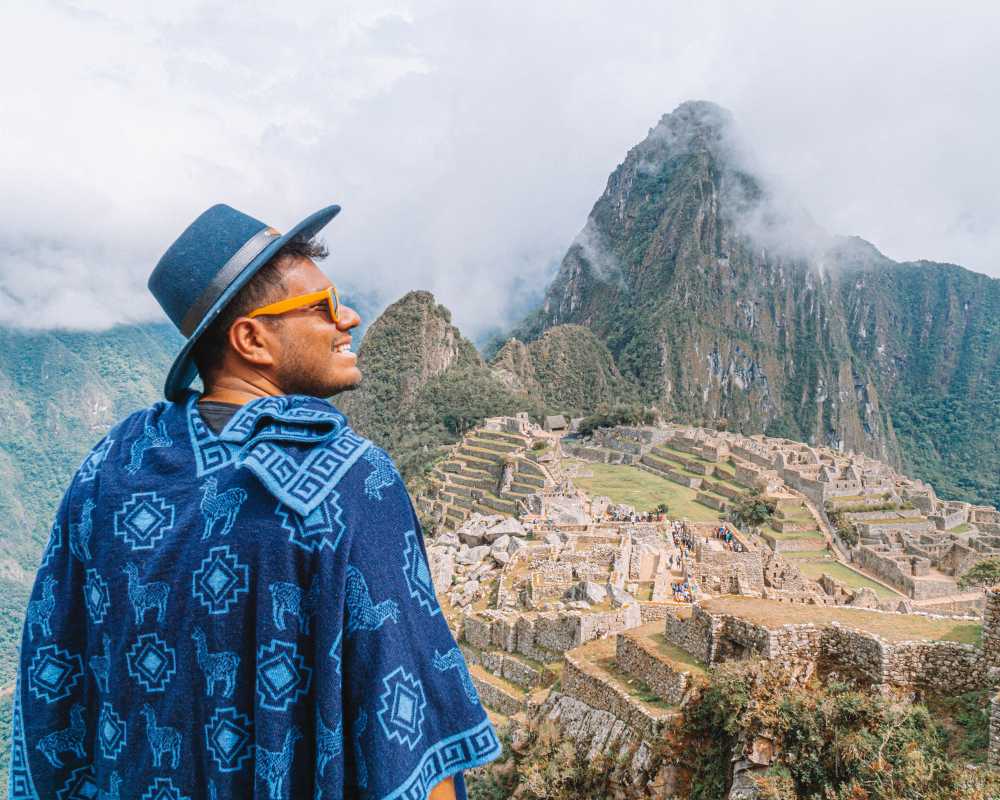
After basking in the magnificence of Machu Picchu, it’s essential to have a seamless plan for the return journey.
The descent from the citadel provides various options, each catering to different preferences, timelines, and budgets.
Whether you decide to board a train, take a bus, or rest in the quaint town of Aguas Calientes, understanding your choices will help make the return trip as memorable as the ascent.
Train Options
The train is one of the most popular methods to get back from Machu Picchu, offering a scenic and comfortable route through the Sacred Valley.
- Expedition Train: This is the standard service that caters to most travelers. It provides cozy seating and panoramic windows, letting you absorb the beauty of the surroundings.
- Vistadome Train: A premium choice for those who want an enhanced visual experience. Its large windows, including those overhead, promise unparalleled views of the captivating Andean landscape. Onboard services like snacks and cultural entertainment make the journey even more delightful.
- Belmond Hiram Bingham Train: Named after the famed explorer of Machu Picchu, this luxury train service promises an opulent travel experience. With gourmet meals, plush interiors, and live music, it’s perfect for those seeking indulgence.
All train services offer routes back to Ollantaytambo and some continue to Cusco. Given the demand, it’s advisable to book well in advance.
Bus Routes
For the short distance between Machu Picchu and Aguas Calientes, the bus is a convenient choice, especially for those who’ve had a long day of exploration.
- Machu Picchu to Aguas Calientes: Regular shuttle buses run this route, navigating the switchback road that connects the archaeological site to the town below. With its winding nature and panoramic views of the Urubamba River, the ride itself is an experience.
- Aguas Calientes Connectivity: While the primary purpose of these buses is to ferry visitors to and from Machu Picchu, some services also connect to nearby attractions for those extending their stay.
Staying in Aguas Calientes
Sometimes, it’s worth taking a pause before moving on, and Aguas Calientes offers just that – a chance to rest, rejuvenate, and explore a bit more.
- Accommodation Options: The town boasts a variety of lodging choices, ranging from budget-friendly hostels to mid-range hotels and upscale resorts. Whether you want a simple bed or a room with a river view, there’s something for everyone.
- Local Cuisine: After the exertions of the day, the town’s eateries offer a delightful culinary respite. Explore local Peruvian dishes, international cuisines, or even a Pisco sour to toast your Machu Picchu adventure.
- Thermal Baths: Aguas Calientes translates to ‘hot waters,’ and true to its name, the town offers thermal baths. It’s a wonderful way to relax and soothe muscles fatigued from trekking.
- Local Exploration: While it’s primarily a gateway to Machu Picchu, the town has its own charm. Wander its streets, visit the local market, or take a short hike to nearby attractions.



